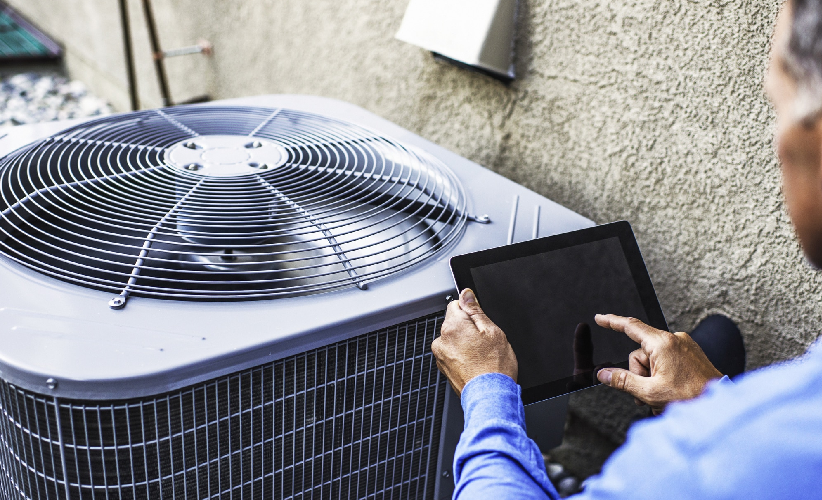The HVAC industry is undergoing a significant transformation, driven by the need for greater energy efficiency, sustainability, and compact design. At the heart of this revolution are new heat exchanger designs, which are setting new standards for performance and environmental impact. One of the most groundbreaking advancements in this field is the microchannel heat exchanger, which you can learn more about at https://www.kaltra.com/microchannel-heat-exchangers. These innovative designs are redefining how HVAC systems operate, offering numerous benefits over traditional models.
Enhanced Energy Efficiency
One of the primary drivers behind the adoption of new heat exchanger designs in HVAC systems is the quest for enhanced energy efficiency. Traditional fin-and-tube heat exchangers, while effective, have limitations in terms of heat transfer efficiency and material usage. In contrast, microchannel heat exchangers are engineered to maximize surface area and improve heat transfer. This design leads to significant energy savings, as systems can achieve desired temperatures more quickly and maintain them with less energy input.
The increased efficiency of microchannel heat exchangers translates directly into lower energy consumption. For homeowners and businesses, this means reduced utility bills and a smaller carbon footprint. As global energy standards become more stringent, the adoption of efficient heat exchangers is crucial for compliance and sustainability.
Compact and Lightweight Design
Space and weight constraints are critical considerations in modern HVAC system design. Traditional heat exchangers can be bulky and difficult to integrate into compact spaces. Microchannel heat exchangers, however, are much more compact and lightweight. This makes them ideal for applications where space is at a premium, such as in residential buildings, commercial spaces, and even in transportation HVAC systems.
The compact design of microchannel heat exchangers also allows for more flexible installation options. This can be particularly advantageous in retrofit projects, where existing HVAC systems need to be upgraded without significant structural modifications. The lightweight nature of these heat exchangers reduces the load on building structures, further enhancing their appeal for a wide range of applications.
Durability and Longevity
Durability is another critical factor that new heat exchanger designs address effectively. Microchannel heat exchangers are typically constructed from materials like aluminum, which offers excellent resistance to corrosion and mechanical stress. This makes them highly durable and capable of withstanding harsh operating conditions, ensuring a long operational life.
The robust design of microchannel heat exchangers reduces the frequency of maintenance and replacement, which can be a significant cost-saving factor over the lifespan of an HVAC system. This durability also enhances the reliability of HVAC systems, ensuring consistent performance and reducing downtime.
Environmental Impact
The environmental benefits of new heat exchanger designs extend beyond energy efficiency. The reduced refrigerant charge required by microchannel heat exchangers minimizes the environmental impact associated with refrigerant production and disposal. Additionally, the materials used in these heat exchangers are often recyclable, contributing to a more sustainable lifecycle.
By improving the efficiency and reducing the environmental footprint of HVAC systems, microchannel heat exchangers support broader sustainability goals. This is increasingly important as industries and governments worldwide strive to reduce greenhouse gas emissions and combat climate change.
Versatility in Applications
Microchannel heat exchangers are not limited to a single type of HVAC application. Their versatility makes them suitable for a wide range of uses, from residential air conditioning systems to large-scale commercial and industrial HVAC installations. Their ability to handle various refrigerants and operate efficiently under different conditions further enhances their applicability.
In automotive HVAC systems, for example, the compact and efficient design of microchannel heat exchangers helps improve fuel efficiency and reduce emissions. In industrial settings, their durability and performance can enhance process cooling and other temperature-sensitive applications.
Conclusion
New heat exchanger designs, particularly microchannel heat exchangers, are revolutionizing the HVAC industry. These innovative systems offer enhanced energy efficiency, compact and lightweight design, durability, and significant environmental benefits. By adopting these advanced heat exchangers, HVAC systems can achieve superior performance, reduce operational costs, and contribute to a more sustainable future. For more information on how these heat exchangers can transform your HVAC systems, visit Kaltra’s microchannel heat exchangers.
The future of HVAC is being shaped by these technological advancements, promising a new era of efficiency and sustainability. As the industry continues to evolve, the role of innovative heat exchanger designs will be pivotal in meeting the growing demands for high-performance, eco-friendly cooling and heating solutions.

